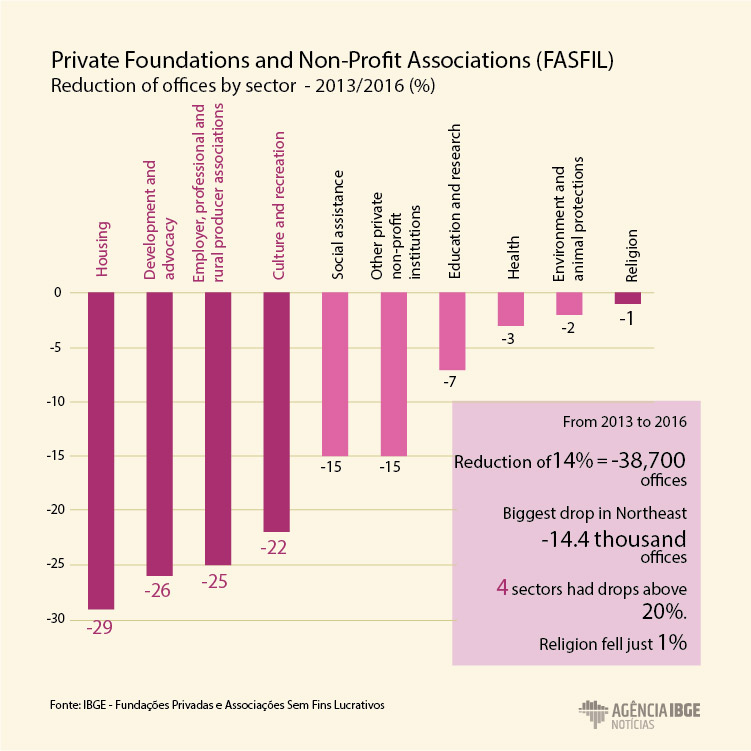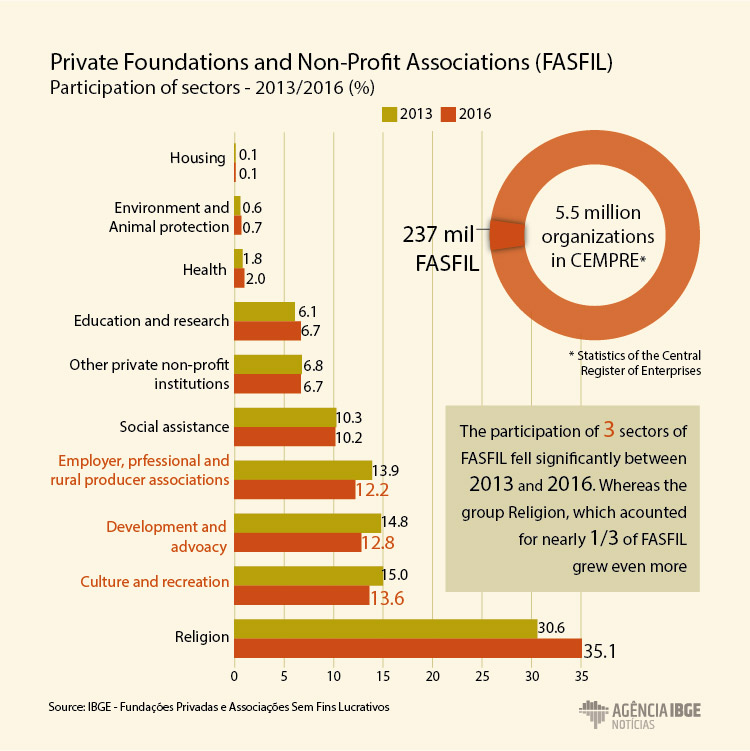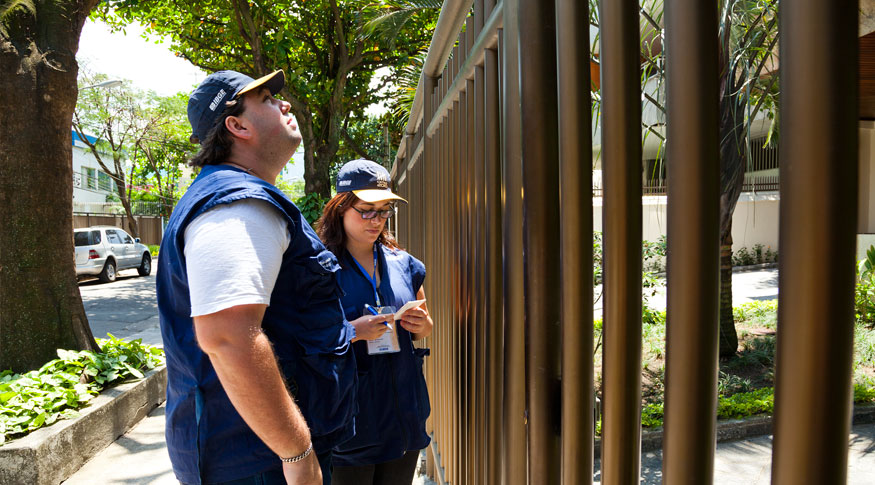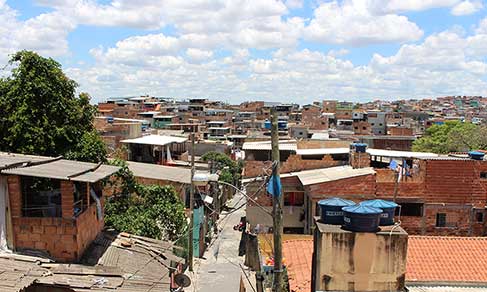Third Sector
More than 38 thousand branches of non-profit organizations are shut down due to crises
April 05, 2019 10h00 AM | Last Updated: April 11, 2019 11h11 AM

The economic crisis contributed to the closure of 38,700 offices of the third sector organizations in the country. The IBGE study Private Foundations and Non-Profit Associations (FASFIL) shows that, between 2013 and 2016, the reduction was 14%, reaching mainly the Northeast, with 14.4 thousand fewer offices, and the Southeast, with 11.6 thousand less. Many of the deactivated units provided free or budget-price services to the low-income population.
"The great majority of those foundations and NGOs depend on some kind of funding, either state or private. Since they have funding, we believe that the reduction is related to this time of economic crisis," explains survey manager Denise Guichard.

Inside the third sector, the most affected segment was Development and advocacy, which concentrates organizations which work in favor of social minorities (black people, women, Indigenous, LGBT) and of communities' rights. Of the 38.7 thousand shutdowns, 10.5 thousand were in this group. That represented a drop of 26%. As a result, the contribution of this kind of organization to FASFIL fell from 14.8% to 12.8%, between 2013 and 2016.
More than half of the deactivated advocacy branches were in the Northeast, totaling 5.7 thousand closed service offices. The number of branches closed in the Southeast and South Regions was also high, nearly 1.8 thousand. In 2016, there were 30.3 thousand organizations left providing this kind of service in Brazil.
According to the study, besides affecting the organizations dedicated to advocacy and social rights, the economic crises also caused the extinction of 9.4 thousand associations of rural employers, professionals and producers, a drop of 25%, and of 9.1 thousand non-profit associations of Culture and recreation, among them soccer teams, sports and tourism associations - a reduction of 22%.

Meanwhile, the most significant group in FASFIL, which is that of religious organizations, was 83,000, in 2016, representing 35.1% of organizations. And it was the segment that least experienced the economic crisis, registering the shutdown of only 1% of the total units, which represented about 1.2 thousand churches, temples, spiritist centers, etc. "It's a group that has managed to do well despite the crisis context we've been living in since 2014," says Denise.




















